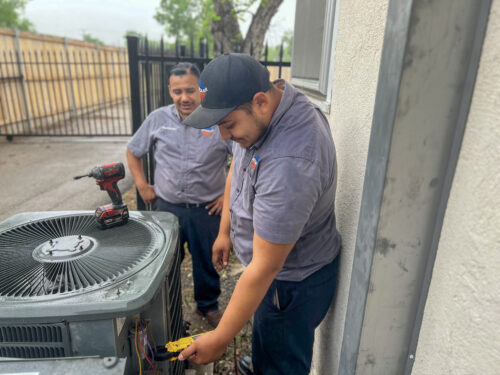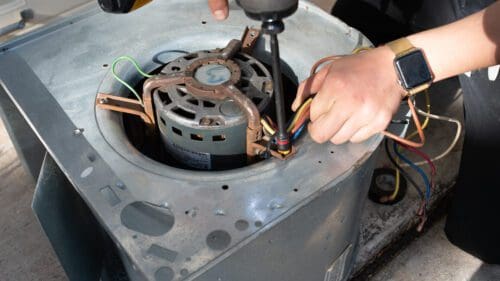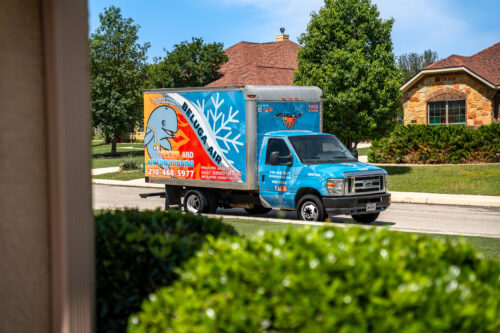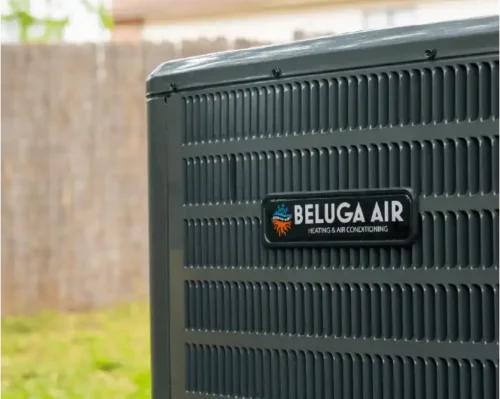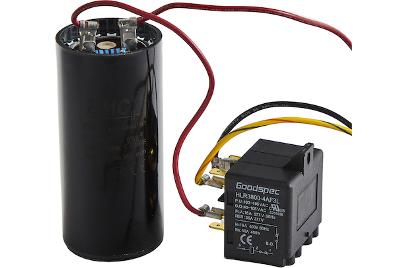Introduction
Welcome to our in-depth exploration of HVAC surge protectors. These vital components play a crucial role in safeguarding HVAC systems from potentially damaging power surges. However, they often remain shrouded in a cloud of myths and misconceptions. This article aims to shed light on these misunderstandings, providing a thorough and technical analysis to help you make an informed decision.
We’ll delve into the diverse range of surge protectors available on the market, highlighting their key features and benefits. We’ll also debunk some of the common myths that often confuse consumers.
Our objective is to equip you with the knowledge to make the best decision for your home. So, let’s cut through the noise and explore the world of HVAC surge protectors.
What is a Surge Protector?
A surge protector, or surge suppressor, is an essential device that safeguards electronic equipment from potentially damaging power surges, or “spikes”. Picture it like water on your countertop, a small mist is ok but a spill could cause damage to something. When the voltage rises above the accepted level, the surge protector suppresses the excess voltage, like a sponge soaking up that spill.
Types of Surge Protectors
Surge protectors come in many styles, including direct plug-in, strip, and rack mount, with some even offering built-in protection for data lines. It’s like an all-you-can-eat buffet, with a variety of options tailored to your needs.
Surge protectors play a crucial role in preventing damage from power surges, working like a shield to protect your electronic devices. Without them, your devices could face an electrical onslaught, leading to immediate and catastrophic damage.
The Importance of Surge Protection for HVAC Systems
Power surges, whether internal or external, can cause significant damage to your HVAC systems. These high amp, low duration fluctuations can be caused by multiple factors such as faulty wiring, lightning, or downed power lines.
Without proper surge protection, your HVAC unit, which is often the most expensive appliance to repair or replace in your home, can become damaged. This not only presents a financial burden but also a safety concern. Hence, it is crucial to invest in a quality HVAC surge protector, even if it might seem costly upfront.
When it comes to installation, it’s best to leave it to the professionals. The surge protector can be installed at either the main breaker panel or at the service disconnect for the HVAC unit.
Remember, prevention is better than cure. Don’t wait for a power surge to wreak havoc on your HVAC system. Act now, and protect your home.
Debunking Myths and Misconceptions
In the realm of HVAC surge protectors, misinformation can often cloud the truth. Let’s clear the air and debunk some common myths and misconceptions.
Myth 1: A Breaker Panel Is Enough To Protect My Home.
While a breaker box serves as a crucial component in managing your home’s electrical system, it unfortunately falls short when it comes to protecting against power surges. A common misconception is that breaker boxes can shield your HVAC systems from electrical spikes. However, their primary function is to prevent circuit overload and electrical fires, not to guard against abrupt voltage spikes caused by lightning, power line issues, or component failures.
The potential damages from power surges, despite having a breaker box, can be severe. Sensitive electronics within your HVAC system can be impaired or completely destroyed, leading to expensive repairs or replacements. Even minor surges can degrade the lifespan of these components over time, leading to premature failure.
The need for additional surge protection for HVAC systems is crucial.
Myth 2: All Surge Protectors Are The Same
This couldn’t be further from the truth. Surge protectors vary in their capabilities, with some allowing multiple components to plug into a single power outlet while also shielding against high-voltage power surges.
It’s vital to fact-check and consult professionals before making decisions about surge protection. In a world where technology is a fundamental part of our lives, the importance of safeguarding our appliances and electronics cannot be overstated.
Myth 3: Surge Protectors Will Protect My System From Everything
Surge protectors are a vital part of your system, but they don’t always perfectly protect your system. Like a sponge, they can only absorb so much. This is why you often see a fuze installed right before the system. Fuzes work differently than surge protectors. They act more like a bridge than a sponge. When too much power tries to cross the bridge it breaks and the power no longer becomes able to reach your system.
So which is better to have and how do I know how big my surge protector should be? How much power can a Surge protector soak up?
The Role of MOVs in Surge Protection
At the heart of surge protection devices, you’ll find a tiny yet crucial component known as the Metal Oxide Varistor (MOV). This semiconductor changes its resistance in response to voltage surges, effectively diverting excess voltage and protecting your devices. Essentially the MOV is like the sponge in your surge protector. This makes MOVs a key player in the battle against voltage spikes.
The higher the MOV rating the more fluctuation the surge protector can handle.
However, like every superhero, MOVs have their Achilles heel. They can’t withstand continuous surges and their performance may suffer if subjected to surges repeatedly.
Essentially the biggest weakness of surge protectors is constant high voltage. Like a sponge it can only soak up so much before it’s completely saturated. This is where fuses come in. They will break and stop the system from overloading
The Importance of Professional Sizing and Installation
When it comes to the world of HVAC surge protectors, professional sizing and installation are not just buzzwords, they’re vital for optimal performance. A poorly sized or installed surge protector can lead to a myriad of issues, such as equipment damage or failure, and even a potential fire hazard. Thus, investing in professional installation is not just a luxury, but a necessity.
Surge protector sizing is a complex process, as it involves taking into account different factors like the cross-sectional area of connecting conductors and the length of the connecting cables.
On the other hand, professional installation ensures that the surge protector is correctly connected, enhancing its efficiency and longevity. Moreover, it can protect your budget by adding longevity to your system components, as it can protect valuable electrical equipment from potential power surges
With the surge protection devices market expected to grow at 5.83% CAGR globally over the next five years, it’s clear that more and more people are recognizing the importance of surge protection. So, don’t be left behind.
The Benefits of Surge Protection
Investing in HVAC surge protection offers a myriad of benefits. One of the most significant is the potential for savings. An HVAC surge protector can help keep your HVAC system in good shape, reducing the need for costly repairs or replacements. A well-maintained system also runs more efficiently, potentially lowering energy bills.
Another benefit is the added safety and peace of mind for homeowners. Even if you don’t live in an area with frequent power outages or lightning strikes, surge protectors can provide protection from short-circuiting or overheating. As Winter approaches we are beginning to see energy spikes from heaters, and with everyone using more electricity due to stay-at-home workers, and delivery services, the risk of power surges is higher than usual, making surge protection even more essential.
Installation of an HVAC protection device is straightforward but should be left to professionals to avoid potential damage due to poor installation. Ultimately, the small investment in an HVAC surge protector can pay off in the long run, saving you money and giving you peace of mind.
In this journey through the myths, strengths & weaknesses of HVAC surge protectors, we’ve deciphered the importance of surge protection for HVAC systems. These devices, far from being mere accessories, play a pivotal role in safeguarding your investment from the unpredictable wrath of power disruptions. They’re the silent guardians, the unsung heroes of your comfort and safety.
However, not all surge protectors are created equal. Just like a key fits a specific lock, the right surge protector for your HVAC system depends on a variety of factors. It’s crucial to cut through the noise, bust myths, and make an informed decision. The market is a jungle, but with some research and consultation with professionals, you can find the perfect protector for your HVAC system.
So, let’s not wait for a power surge to strike. Take action. Protect your homes, your Families, and your peace of mind. After all, in the battle against power disruptions, HVAC surge protectors are not just hype; they’re our heroes.
Want to Learn More? Read about some other key components like Hard Start Kits.
